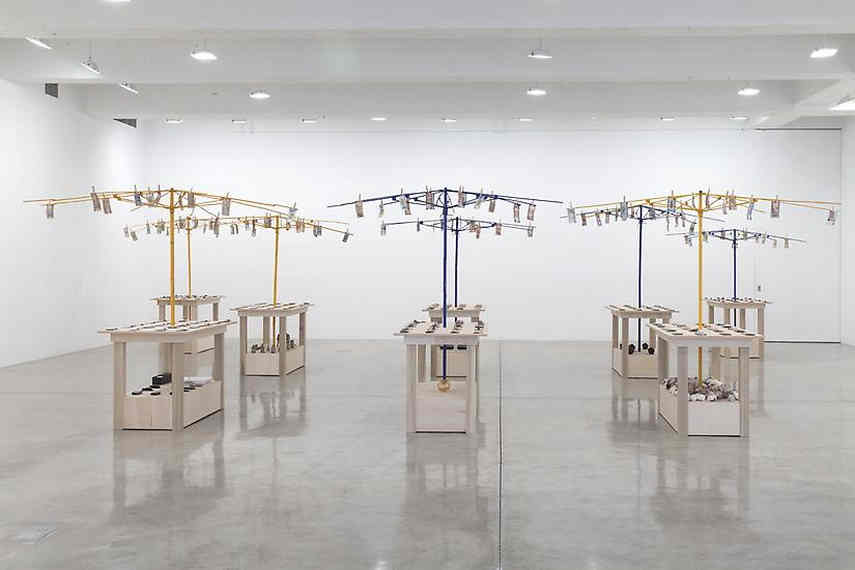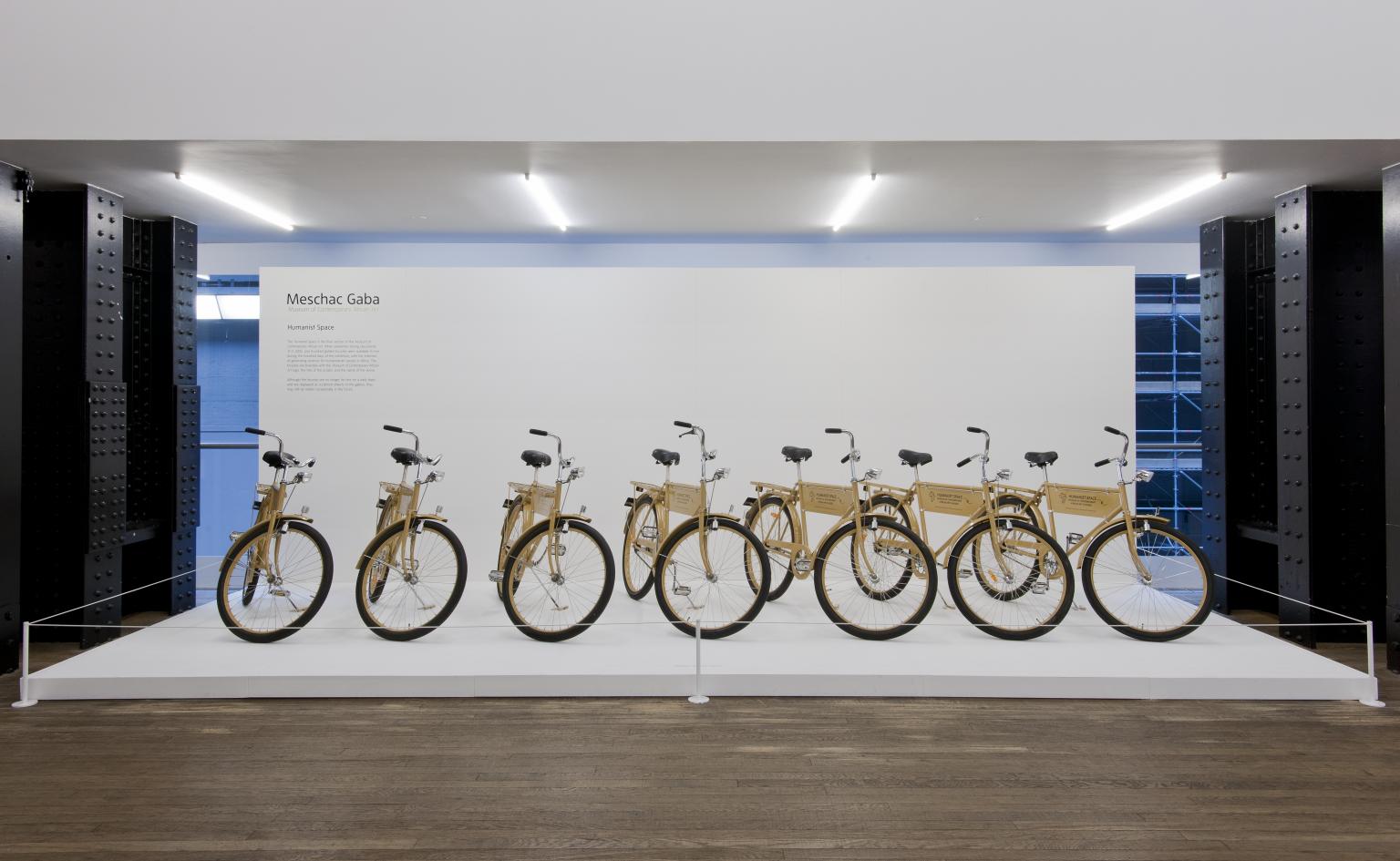Beninese conceptual artist Meschac Gaba was born in 1961 in Cotonou, Benin. He studied at the Rijksakademie voor Beeldende Kunsten in Amsterdam in 1996-7 and currently lives and works between Contonou and Rotterdam. His work explores themes of globalization, consumerism, and the Western museum through acts of artistic appropriation.
It was at the Rijksmuseum, Leiden in 1997, that Gaba inaugurated his major work the Museum of Contemporary African Art, a project which consists of an immersive twelve-room installation which fuses art and daily life, questioning the nature of the museum and perceptions of African art. This multi-layered, humorous, and thought-provoking work was created over a five-year period and includes a wide variety of made and found objects, including paintings, sculptures, drawings, videos, musical instruments, religious artifacts, and shredded banknotes, all of which have been thoughtfully arranged to resemble stalls in a West African market. This huge work, consisted of related sections including a library, music room, salon and ‘humanist space’.
The show also marked Tate’s acquisition of the work, part gifted to Tate by the artist and part purchased through the Acquisitions Fund for African Art supported by Guaranty Trust Bank plc.
His piece was first displayed in 2002 at Documenta 11. Gaba was given a place in Rotterdam where he could live and keep the work. With the exception of his Library, which he gave back to his hometown after his son asked for a more conventional home, Gaba sold and donated the most of the work to the Tate Modern. In the year 2013, Gaba split his time between his hometown of Cotonou and Rotterdam, where he also lived with his wife and children. The entire piece was shown at the Tate Modern in 2013 as a part of the Tate’s two-year program of exhibitions with an African theme.

This way, Gaba first emerged on the international art scene. The “museum” set forth a sort of living biography of the artist (Gaba was actually married in the Wedding Room in 2000), as well as positing a biting critique of the power of Western cultural conventions. In more recent work, Gaba has created objects and sculptures from braided hair extensions that are popular with African-Americans and the diaspora. The extensions, which originated in West Africa, form models of the World Financial Center, the Guggenheim—rendered all in black—and other buildings, and vehicles from the United States and Benin.
2014 saw the debut of Gaba’s “Exchange Market” solo gallery exhibition in New York. Ten sculptures of unpolished wood tables, each with a wire umbrella stand from which African currencies hung, were shown on the ground level. Each table represented a particular type of product, such as cotton, cocoa, or diamonds. Bank-shaped artworks constructed of wood, plexiglass, and old bills were strung around the walls. Four foosball tables and little souvenir sculptures like hand-painted cricket bats and a miniature pool table were upstairs, evoking the game section of Gaba’s museum.

Image courtesy of Tate
Notable group shows include THIS IS NOT AFRICA – UNLEARN WHAT YOU HAVE LEARNED, ARoS Aarhus Kunstmuseum, Denmark (2021); The House of Opportunity, S.M.A.K, Ghent, Belgium (2020); Risk, A4 Arts Foundation, Cape Town, South Africa (2019); The Warmth of Other Suns: Stories of Global Displacement, Phillips Collection, Washington DC, USA (2019); Leaving the Echo Chamber, the 14th Sharjah Biennale (2019); African Metropolis. An Imaginary City at MAXXI, Rome (2018); Enchanted Bodies / Fetish for Freedom at Galleria d’Arte Moderna e Contemporanea, Bergamo (2018); The Red Hour, 13th Dakar Biennale (2018); More for Less at A4 Arts Foundation, Cape Town (2018); Their Own Harlems at The Studio Museum in Harlem (2017); Afrique Capitales at La Villette in Paris (2017); Making Africa: A Continent of Contemporary Design at the Vitra Design Museum, Weil am Rhein (2015); Atopolis, Mons 2015 – European Capital of Culture; Liberated Subjects: Present Tense, Foundation De 11 Lijnen, Oudenburg (2015); The Theatre of the World, Museo Tamayo, Mexico (2014); When Attitudes Became Form Become Attitudes: A Restoration / A Remake / A Rejuvenation / A Rebellion, CCA Wattis Institute for Contemporary Arts, San Francisco; Museum of Contemporary Art, Detroit (2013); Benin Biennale (2012); La Triennale – Intense Proximity, Palais de Tokyo, Paris (2012); The Global Contemporary: Art Worlds after 1989 at ZKM Center for Art and Media Karlsruhe, Germany (2011); Touched, the 2010 Liverpool Biennale; Port City at Greenland Street Gallery, Liverpool (2008); Africa Remix (2004-2007) and, in 2006, the São Paolo, Gwangju, Sydney and Havana biennales.


